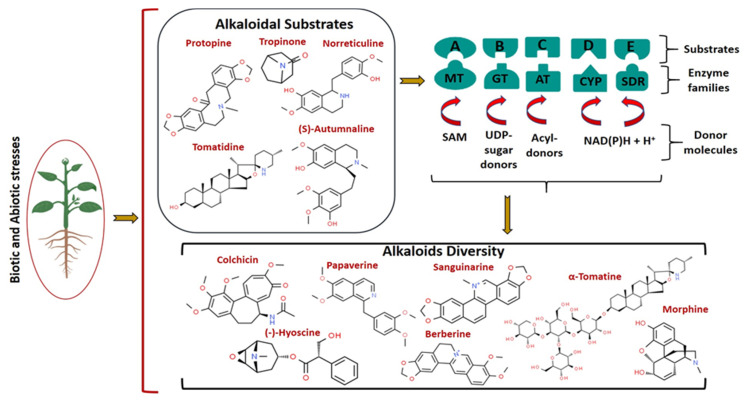Figure 2.
Alkaloid diversity in the plant kingdom. Alkaloids are produced in various parts of plants (such as the leaves, roots, seeds, etc.). Alkaloids are transported to required tissues mainly in response to various stress signals perceived from the environment. In the biosynthesis of alkaloids, enzymes of different families (MT: methyl transferase; GT: uridine-diphosphate-glycosyl transferase; AT: acyl transferase; CYP: cytochrome P450-monooxygenase and -reductase; SDR: short-chain dehydrogenase/reductase) act on alkaloidal substrates to generate diverse alkaloids with certain chemical modifications in numerous plant species. These enzymes catalyze the modification of alkaloidal substrates represented as A, B, C, D, and E in the presence of donors. SAM-S-adenosyl methionine acts as methyl donor for MTs; UDP-Glucose (UDP-Glc), UDP-rhamnose (UDP-Rha), UDP-xylose (UDP-Xyl), UDP-galactose (UDP-Gal), and UDP-glucuronic acid (UDP-GlcUA) are sugar donors for UDP-GTs; acyl-CoA thioesters and 1-O-β-glucose esters are acyl donors for ATs; NAD(P)H acts as an electron donor for CYPs and SDRs. Plant image is retrieved from BioRender (BioRender.com) (accessed on 20 March 2021). The chemical structures of alkaloids are drawn from “ChemSpider: the Free Chemical Database”.

